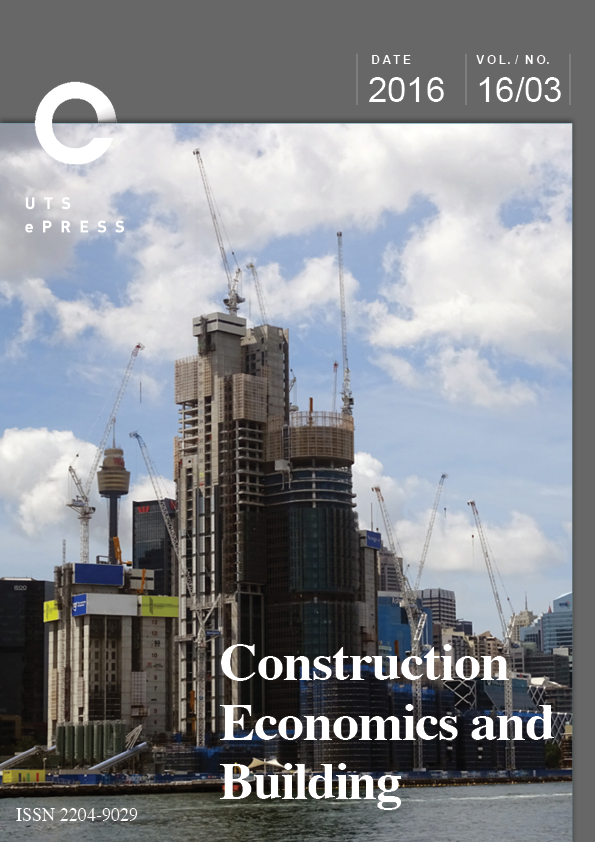An innovation resistance factor model
Main Article Content
Abstract
The process and implementation strategy of information technology in construction is generally considered through the limiting prism of theoretical contexts generated from innovation diffusion and acceptance. This research argues that more attention should be given to understanding the positive effects of resistance. The study develops a theoretical framing for the Integrated Resistance Factor Model (IRFM). The framing uses a combination of diffusion of innovation theory, technology acceptance model and social network perspective. The model is tested to identify the most significant resistance factors using Partial Least Square (PLS) technique. All constructs proposed in the model are found to be significant, valid and consistent with the theoretical framework. IRFM is shown to be an effective and appropriate model of user resistance factors. The most critical factors to influence technology resistance in the online project information management system (OPIMS) context are: support from leaders and peers, complexity of the technology, compatibility with key work practices; and pre-trial of the technology before it is actually deployed. The study provides a new model for further research in technology innovation specific to the construction industry.
Article Details
Section
Authors who publish with this journal agree to the following terms:
a) Authors retain copyright and grant the journal right of first publication with the work simultaneously licensed under a Creative Commons Attribution License that allows others to share and adapt the work with an acknowledgement of the work's authorship and initial publication in this journal.
b) Authors are able to enter into separate, additional contractual arrangements for the non-exclusive distribution of the journal's published version of the work (e.g., post it to an institutional repository or publish it in a book), with an acknowledgement of its initial publication in this journal.
c) Authors are permitted and encouraged to post their work online (e.g., in institutional repositories or on their website) prior to and during the submission process, as it can lead to productive exchanges, as well as earlier and greater citation of published work (See The Open Access Citation Advantage Service). Where authors include such a work in an institutional repository or on their website (ie. a copy of a work which has been published in a UTS ePRESS journal, or a pre-print or post-print version of that work), we request that they include a statement that acknowledges the UTS ePRESS publication including the name of the journal, the volume number and a web-link to the journal item.
d) Authors should be aware that the Creative Commons Attribution (CC-BY) License permits readers to share (copy and redistribute the work in any medium or format) and adapt (remix, transform, and build upon the work) for any purpose, even commercially, provided they also give appropriate credit to the work, provide a link to the license, and indicate if changes were made. They may do these things in any reasonable manner, but not in any way that suggests you or your publisher endorses their use.
